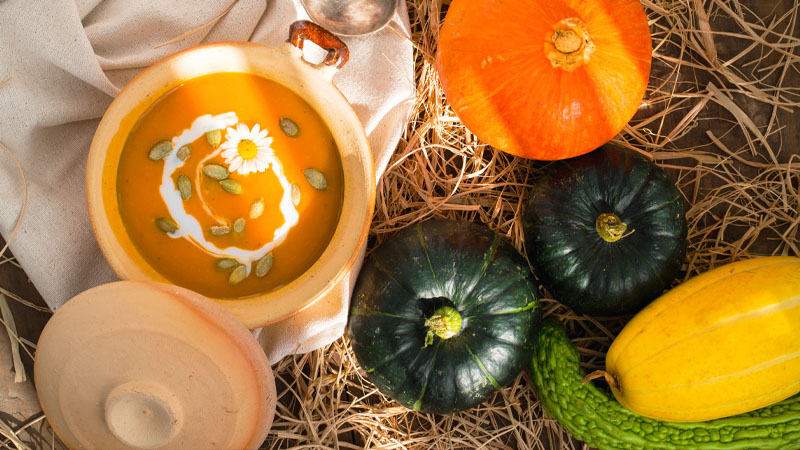Happy Halloween! Jack-O-Lanterns, pumpkins with ghoulish faces placed in front of homes, have been a symbol of Halloween for centuries1. Because of their popularity, the pumpkin industry in the USA is geared towards supplying for this annual festival2. On the contrary, pumpkins are more commonly used for medicinal cuisine in Asia as they reduce swelling by promoting diuresis3,4.
Although pumpkins are not an easy ingredient to handle, you can enjoy the full benefits by simply cooking with the oil extracted from their seeds. Pumpkin seed oils have high oxidative stability (cooking oil can oxidize at high temperatures, generating harmful compounds), making them ideal for cooking5.
Raman spectroscopy is routinely used to monitor the quality of foods, and we have explored the Raman spectra of olive oils using the B&W Tek i-Raman® Plus-785 system previously (Fast Ingredient Analysis of Edible Oils Using a Portable Raman Spectrometer). Nevertheless, the same system is not optimal for evaluating pumpkin seed oils which are deeply colored and have strong fluorescence (Figure 1). This problem can be resolved by using 1064 nm handheld systems like B&W Tek’s NanoRam®-1064 or 1064 nm portable systems like B&W Tek’s i-Raman EX and i-Raman Prime-1064.

Meanwhile, Figure 2 shows Raman spectra of different plant-based oils collected with our NanoRam-1064 system. The peaks for the pumpkin seed oil can be clearly characterized like other types of oil. All plant-based oils have similar Raman peaks since they essentially have the same content6. However, the pumpkin oil had a distinct peak at 1528 cm-1, corresponding to carotenoids – a bright yellow pigment in plants known to mitigate degenerative disease7,8.
Figure 2 Raman spectra of pumpkin seed (blue line), corn oil (purple line), perilla seed oil (red line), and olive oil (green line) collected with 1064 nm Raman system. The carotenoids peak (1528 cm-1) is highlight in blue.For more information about B&W Tek’s 1064 nm Raman systems, visit https://bwtek.com/technology/raman/.
1. “History of the Jack O’ Lantern”, HISTORY, https://www.history.com/news/history-of-the-jack-o-lantern-irish-origins (Accessed 10/14/2021) 2. “Pumpkins: Background & Statistics” USDA, https://www.ers.usda.gov/newsroom/trending-topics/pumpkins-background-statistics/ (Accessed 10/14/2021) 3. Jang S-M., et al., 2001. The Comparison of Food Constituent in Different Parts of Pumpkin, J. Korean Soc. Food Sci. Nutr. 30(6), 1038 – 1040(2001) 4. “Why Pumpkin Reduce Swelling” (in Korean), Donga Science, https://www.dongascience.com/news.php?idx=7465 (Accessed 10/14/2021) 5. Stevenson D.G., et al., 2007. Oil and Tocopherol Content and Composition of Pumpkin Seed Oil in 12 Cultivars, J. Agric. Food Chem. 55(10), 4005 – 4013 6. Duraipandian S., et al., 2019. Authenticity and Concentration Analysis of Extra Virgin Olive Oil Using Spontaneous Raman Spectroscopy and Multivariate Data Analysis, Appl. Sci. 9(12), 2433 7. Perera C.A., Yen G.M., 2007. Functional properties of carotenoids in human health, International Journal of Food Properties, 10(2), 201 – 230 8. “Pump up for pumpkin”, USDA, https://www.usda.gov/media/blog/2019/10/08/pumped-pumpkin (Accessed 10/14/2021)




 Looking for something specific?
Looking for something specific?





